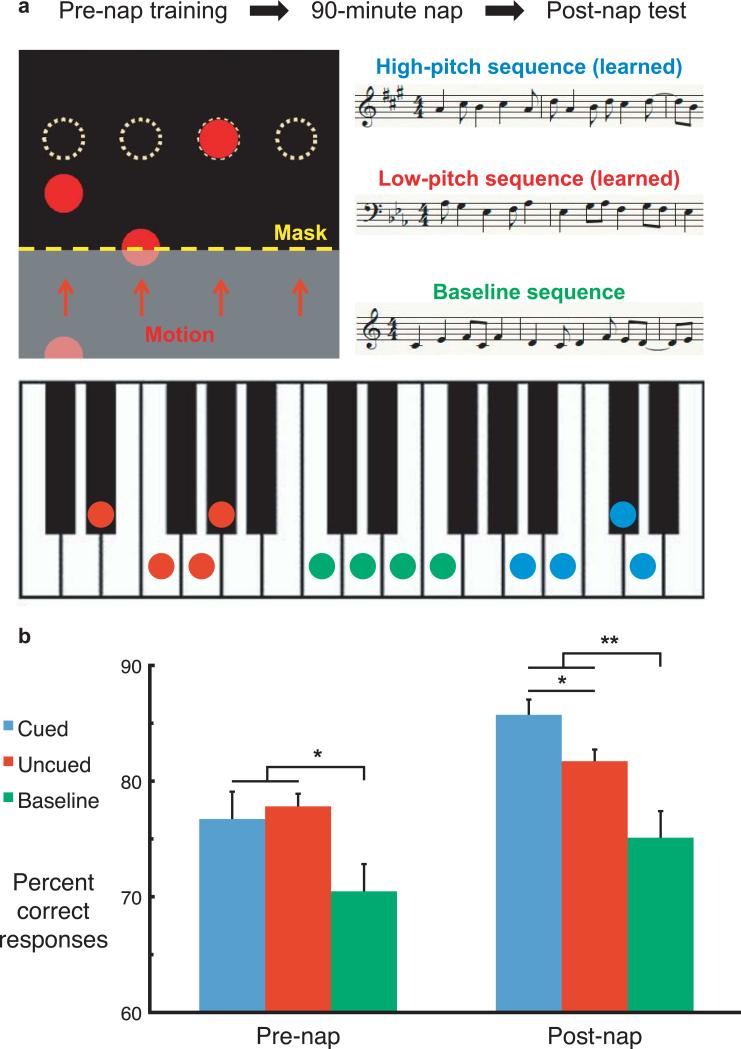Figure 1.
Methods and behavioral results. (a) Subjects learned to play melodies with four fingers of the left hand while watching circles that indicated which key to press when. Circles ascended at 10.8 cm/s toward four stationary targets (dashed yellow outlines). After initial learning trials, the amount of advance information was reduced using an opaque mask (shown here as transparent). Two melodies were repeatedly practiced (red and blue). Baseline melodies (green) were played during testing periods before and after the nap. Either the high melody (8 subjects) or the low melody (8 subjects) was presented covertly (cued) during sleep. (b) Accuracy scores (percent correct responses) were computed according to whether the correct key was pressed at the proper time. Differences were analyzed using two-tailed paired t-tests (N=16; * = P<0.05; ** = P<0.005). Error bars show standard errors of the mean in each condition after removing across-subject variability (i.e., subtracting the mean across all conditions for each individual), which provides variability estimates in agreement with the error terms used in the critical within-subject comparisons.

